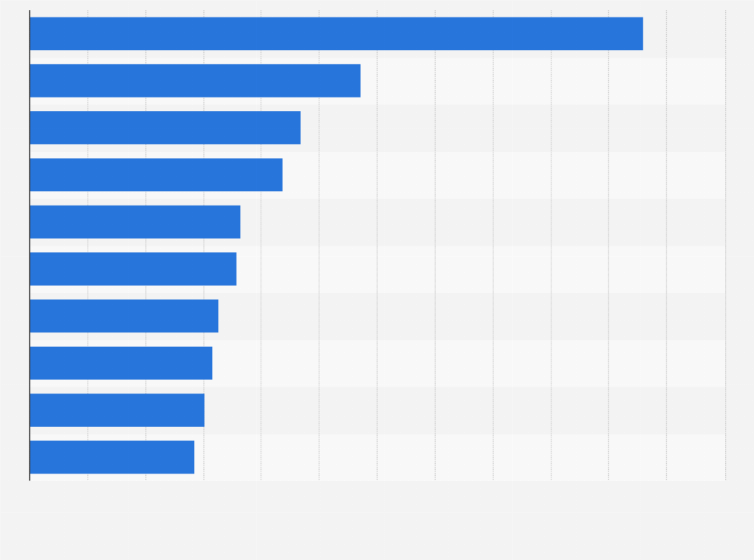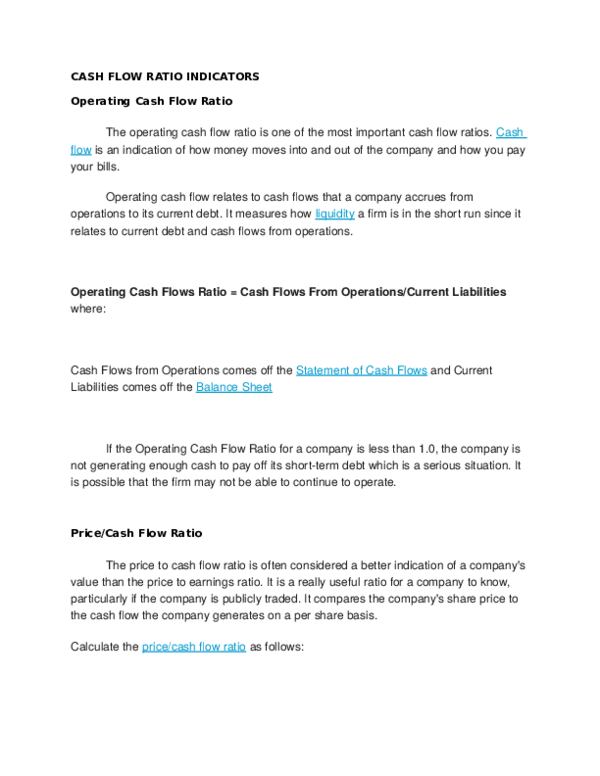What Is a Settlement Bank? Definition, Functions, and Process
September 23, 2022 Punsara Jayathissa No Comment
In real-time gross settlement, a payer’s financial institution pays the payee’s financial institution at the time and for the amount of each of its customers’ individual transactions. The Federal Reserve uses the term “instant payment system” to highlight this distinction vis-a-vis other types of faster payment systems. By contrast, in deferred net settlement, participating financial institutions settle their net obligations to one another periodically. By contrast, real-time settlement requires that financial institutions ensure they maintain adequate liquidity to settle the gross value of transactions at all times. To avoid these risks, certain real-time settlement systems can and do include protections to mitigate liquidity risk between participants.
Clearing starts with financial institutions sending payment messages through the payment network; the payment network routes these messages and other related information for the participating financial institutions to correctly process payment instructions. In faster payment systems, these messages flow on a transaction-by-transaction basis, and by agreement among the participants, the clearing process enables faster payments to be credited to payees’ accounts in near real time. When an individual or business initiates a wire transfer, clearing begins the fund delivery process. First, the sender’s bank submits payment instructions to an interbank clearing network. These include each currency’s interbank settlement network along with systems dedicated to clearing. The Clearing House Interbank Payments Systems, known as CHIPS, is privately operated by The Clearing House (TCH).
Multilateral net settlement is more typical and is the implied netting approach in this article. Suppose banks A and B are part of a deferred net settlement system, with a grace deferral period of two months. At the end of the day (i.e., the exchange period), the clearinghouse processes the transactions and confirms that Bank A’s net settlement amount is –$600,000, and Bank B’s net settlement amount is $600,000. The Federal Reserve Banks provide the National Settlement Service (NSS), which allows participants in private-sector clearing arrangements to exchange and settle transactions on a multilateral basis through designated master accounts held at the Federal Reserve Banks. There are approximately 12 NSS arrangements that have been established by financial market utilities, check clearinghouse associations, and automated clearinghouse networks.
What Is a Settlement Bank? Definition, Functions, and Process
At the end of the day, the information is shared with a mediating institution (the clearinghouse), and the net differential is transferred between participating banks. The settlement bank will typically deposit funds into the merchant’s account immediately. The settlement bank provides settlement confirmation to the merchant when a transaction has cleared. A settlement bank is the last bank to receive and report the settlement of a transaction between two entities. As the merchant’s primary bank for receiving payment, it can also be referred to as the acquiring bank or the acquirer. The net settlement system ensures that liquidity is maintained throughout the exchange period (typically a day, but could be deferred), and the outflow of payments occurs only after the clearing institution clears and approves the accounts.
SocGen reaches settlement with U.S. regulators over messaging … – Reuters
SocGen reaches settlement with U.S. regulators over messaging ….
Posted: Thu, 03 Aug 2023 14:59:00 GMT [source]
Bilateral net settlement systems are payment systems in which payments are settled for each bilateral combination of banks. Banks that send out more funds in transfers than they receive (i.e., banks with a positive net settlement balance) are credited with the difference, and banks with a negative net settlement balance pay the difference. Though wire transfers facilitate the intraday transfer of funds, clearing and settlement do not occur with the same urgency. However, because the wire recipient can already access the delivered funds by the end of the clearing stage, the timing of settlement is more flexible. Banks can settle their accounts and exchange the wire amount either immediately after clearing or later on.
Net Settlement
To facilitate electronic transactions, the merchant must first open a merchant account and sign an agreement with an acquiring bank detailing terms for processing and settlement of transactions for the merchant. Acquiring settlement banks what is a settlement bank usually charge merchants a per transaction fee and a monthly fee for their services. Real-time settlement is when settlement between participants in the payment system occurs more or less concurrently with clearing the payment message(s).

Taskize – a unique service for banking operations staff to get work done faster – helping the financial services industry make work flow by enabling clients, colleagues and counterparties to address manual interventions efficiently, intelligently and securely. Therefore, Bank A needs to pay $600,000 to Bank B, but the payment is deferred for 60 days due to the deferred net settlement system. Given that net settlements are not paid immediately, the risk of an institution or bank defaulting on their debt is higher in the net settlement system compared to the RTGS system, where default risk is eliminated due to immediate payments. End-of-day net funds settlement is conducted through settling banks that act on behalf of participants, so that funding occurs via a single transmission, called the National Settlement Service (NSS), to the Federal Reserve.
What are the tradeoffs in the two settlement arrangements?
These happen when customers file complaints with their card companies due to a problem with a purchase and they want their money back. The issuing bank will request that the merchant’s settlement bank return the funds as a result. This leaves the merchant in the position of having to decide whether to accept or appeal the request.
Three Years After Court Ruling, Israeli Settlement Allows Only … – Haaretz
Three Years After Court Ruling, Israeli Settlement Allows Only ….
Posted: Wed, 09 Aug 2023 08:50:00 GMT [source]
Then the recipient’s bank deposits the wire amount into the recipient’s account using reserve funds. When the sending bank withdraws the corresponding amount from the sender’s account, clearing is completed. In a multilateral net settlement system, transfers received by a bank are offset against those sent out – here, “transfers” refer to the sum of all funds received and sent to banks that are part of the settlement system. NSS provides an automated mechanism for submitting settlement files to the Federal Reserve Banks and reduces settlement risk to participants by granting settlement finality on settlement day.
The service is offered to depository institutions with Federal Reserve Bank master accounts that settle for participants in clearinghouses, financial exchanges and other clearing and settlement arrangements. Settlers benefit because the credits to their master accounts are final and irrevocable. These actions will trigger obligations among the participating financial institutions, and between them and their customers. As an example, when a payee’s financial institution accepts a payment order from the payer’s financial institution, the payer’s financial institution is obliged to pay the payee’s financial institution for the amount of the transaction. In turn, the payee’s financial institution is obliged to pay its payee customer.
Discover how the National Settlement Service can benefit your financial institution
Settlement and clearing systems are an important component of modern payment operations. With one Euroclear Bank account, you get access to a wide range of markets, including the T2S platform. We operate robust links with local CSDs and other ICSDs, connecting domestic and international issuers, agents and investors, around the world. Settlement of cash-settled interest rate swaps is in the form of periodic interest payments based on an interest rate over a term to maturity.
- It involves upgrading personal rights into property rights and thus protects market participants from the risk of the default of their counterparties.
- Since transfers occur independently through correspondent banking, counterparties are subject to principal and liquidity risk to the full value of the trade.
- Settlement banks charge for various expenses such as a monthly minimum fee, terminal and gateway fees, reporting and processing fees, and more.
- A settlement bank might choose to work with just a few major networks, such as Visa or Mastercard, or it might support others—such as Discover and American Express–to offer more flexibility for merchants and customers.
If you’re interested in consolidating payment management, Modern Treasury’s API offers a seamless platform for tracking payments. See how you could run more accurate payment operations by signing up for a sandbox, or reaching out to one of our payments advisors. Further information on each exchange’s rules and product listings can be found by clicking on the links to CME, CBOT, NYMEX and COMEX. View the schedule of operating hours and extension guidelines for the National Settlement Service. 4 Paypal®, Venmo and Square’s Cash App are other examples, but these use nonbank, closed-loop structures that this article doesn’t address. Gain unlimited access to more than 250 productivity Templates, CFI’s full course catalog and accredited Certification Programs, hundreds of resources, expert reviews and support, the chance to work with real-world finance and research tools, and more.
Having access to the safest, smoothest and most efficient settlement systems is your priority when managing a wide range of transactions. With ensured speed and security in transactions, a business can benefit from time and cost-effectiveness by obtaining a settlement account to manage its financial activities. One commonly misunderstood system, the Society for Worldwide Interbank Financial Telecommunication (SWIFT), is neither a settlement network nor a clearing network. Instead, SWIFT is a messaging system which sends global payment orders to be processed by a clearing or settlement system.

If available funds are deducted and sent through the processing network to the settlement bank which settles the transaction for the merchant. 6 Some countries use real-time net settlement, where transactions net every few seconds, essentially in real time. However, these two systems are uncommon, particularly in the United States, so this article doesn’t address them. In a net settlement system, banks keep track of their electronic (and physical) credit and debit transactions throughout the day.
After a merchant partners with a settlement bank, it can accept card payments through compatible card networks. A settlement bank might choose to work with just a few major networks, such as Visa or Mastercard, or it might support others—such as Discover and American Express–to offer more flexibility for merchants and customers. Deferred net settlement systems are able to mitigate credit risk in a variety of ways. A net settlement is an inter-bank payment settlement system wherein banks collect data on transactions throughout the day and exchange the information with the clearinghouse and the central bank to settle any outstanding amounts. Once the acquiring settlement bank accepts a cardholder’s payment card, the settlement bank then contacts its network to process the transaction. The payment brand network contacts the cardholder’s bank, also known as the issuing bank to ensure that funds are available.
- Clearing starts with financial institutions sending payment messages through the payment network; the payment network routes these messages and other related information for the participating financial institutions to correctly process payment instructions.
- Dematerialisation involves dispensing with paper instruments and certificates altogether.
- The recipient’s bank is notified of the credit, and, when funds have been transferred, the wire is completed.
- For debit card payments, the funds will be withdrawn directly from the cardholder’s bank account.
- Settlement involves exchanging funds between the two banks, while clearing can end without any interbank money movement.
If payments are not time-sensitive, CHIPS is a less expensive option than Fedwire, which processes gross settlements in real time. A settlement bank, also known as an “acquirer” or “acquiring bank,” works on the merchant’s end to assist with taking credit card payments from customers and receiving the funds in the merchant account. This financial institution does business with one or more card networks and serves as a middleman between the merchant and the card issuer’s bank when you use your card. Settlement involves exchanging funds between the two banks, while clearing can end without any interbank money movement. In the clearing process, funds move between the recipient’s or sender’s bank account and their bank’s reserves. Because central banks run interbank settlement networks, settlement systems can facilitate money movement between banks, debiting the sender’s account and crediting the receiver’s account at the central bank directly.
Recent Posts
-
The Ultimate Guide To Scented Pansy
Apr 24, 2024 -
Used Underwear Purchase & Sell Anonymously Get A Whiff Of That
Apr 23, 2024 -
How To Meet Laotian Brides
Apr 21, 2024
-
Who Are Korean Mail Order Brides?
Apr 17, 2024
-
Where To Find Jordanian Brides
Apr 17, 2024
Recent Comments
Archives
- April 2024
- March 2024
- February 2024
- January 2024
- December 2023
- November 2023
- October 2023
- September 2023
- August 2023
- July 2023
- June 2023
- May 2023
- April 2023
- March 2023
- February 2023
- January 2023
- December 2022
- November 2022
- October 2022
- September 2022
- August 2022
- July 2022
- June 2022
- May 2022
- April 2022
- March 2022
- February 2022
- January 2022
- December 2021
- November 2021
- October 2021
- September 2021
- August 2021
- June 2021
- May 2021
- April 2021
- October 2020
